|
|
|
Tuesday, November 26th, 2019
Scheduling is every boss’ responsibility.
Good scheduling means your people can count on having a life outside work.
If projects stack up, or have deadlines like these, you need to figure out what’s going on.
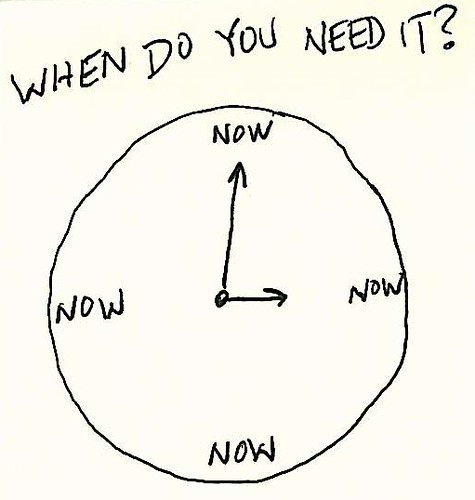
Don’t look to your team for a solution.
In most cases, look in the mirror to solve the problem.
Image credit: Dan4th Nicholas
Posted in Culture, Motivation, Retention | No Comments »
Wednesday, October 17th, 2018
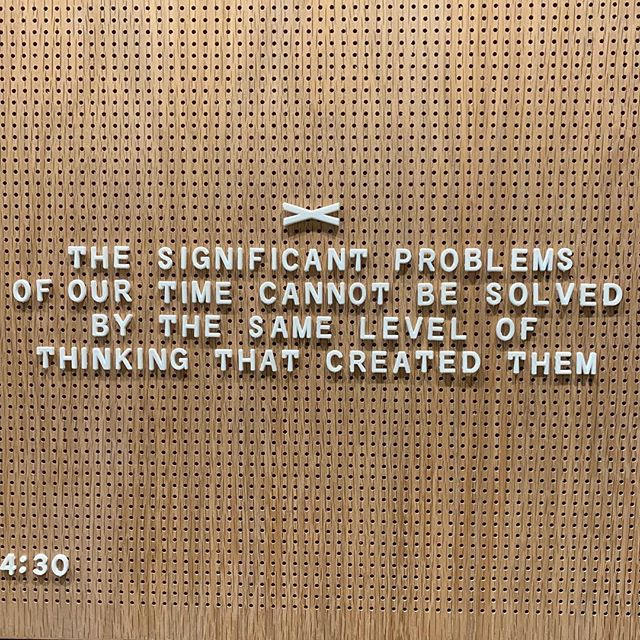
Are you familiar with the song Where have all the flowers gone?
It was written by Pete Seeger, with additional verses added by others, and the full circle of the song is as valid today as it was when Seeger wrote it nearly 60 years ago.
The refrain at the end of each verse is “Oh, when will they ever learn? Oh, when will they ever learn?” and it became one of the best known protest songs of the Viet Nam War. Fast forward to today you find proof across the globe that we still haven’t learned.
That refrain also applies, with some rewording, to the war being waged between technical advances and consumer safety and security.
In September, Facebook hesitantly admitted that its access keys were hacked due to flawed code — a hack that potentially affected more than 50 million users, including Zukerberg and Sandberg.
Facebook explained that the hack was caused by multiple bugs in its code relating to a video-upload tool and Facebook’s pro-privacy “View As” feature. (…)
Most recently, a major flaw was found in the AI code used in personal assistants, such as Alexa, Siri, or Cortana.
Scientists at the Ruhr-Universitaet in Bochum, Germany, have discovered a way to hide inaudible commands in audio files (…) the flaw is in the very way AI is designed. (…) According to Professor Thorsten Holz from the Horst Görtz Institute for IT Security, their method, called “psychoacoustic hiding,” shows how hackers could manipulate any type of audio wave–from songs and speech to even bird chirping–to include words that only the machine can hear, allowing them to give commands without nearby people noticing. The attack will sound just like a bird’s call to our ears, but a voice assistant would “hear” something very different.
The “damn the security / full speed ahead” mentality isn’t anything new.
Nor is the greed that drives it.
There is an old saying, “Fool me once, shame on you. Fool me twice, shame on me.”
When will they ever learn?”
It’s likely the answer is “never.”
Image credit: koka_sexton
Posted in Business info | 1 Comment »
Monday, November 13th, 2017
It’s amazing to me, but looking back over more than a decade of writing I find posts that still impress, with information that is as useful now as when it was written.
Golden Oldies are a collection of what I consider some of the best posts during that time.
Who’d a thunk it? A world I wrote about 5 years ago that I hoped I wouldn’t live to see has already happened and I’m still here. Bummer.
Read other Golden Oldies here.
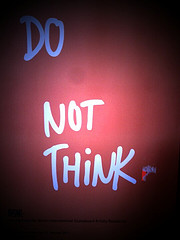 Two stories today made me really happy. Two stories today made me really happy.
Happy that I won’t be around to see the world that the Silicon Valley mentality is working frantically to make happen. (I say ‘mentality’ because startups are all over as is the mindset described.)
It’s a world of instant solutions, from quasi-immortality, postmortem tweets from soon-to-be-launched LivesOn, to futurist Ayesha Khanna’s idea for smart contact lenses that would make homeless people disappear from view—out of sight/out of mind.
Solutionists err by assuming, rather than investigating, the problems they set out to tackle. Given Silicon Valley’s digital hammers, all problems start looking like nails, and all solutions like apps.
And then there is Seesaw, which allows you to “crowdsource absolutely every decision in your life” and practically guarantees siloed, homogenized attitudes over the long-term.
The drive seems to be to avoid thinking in general, let alone any of the less comfortable deep thinking required to mature and develop anything vaguely resembling wisdom.
Leszek Kolakowski argued that, given that we are regularly confronted with equally valid choices where painful ethical reflection is in order, being inconsistent is the only way to avoid becoming a doctrinaire ideologue who sticks to an algorithm. For Kolakowski, absolute consistency is identical to fanaticism.
Or as Emerson said long before the rise of today’s technology, “A foolish Consistency is the hobgoblins of little minds, adored by little statesmen, philosophers, and divines. With consistency, a great soul simply has nothing to do.”
The main problem with so many innovators is that they want to solve problems with an algorithm, which ignores the entire messy human equation; much like medicine desperately wants to believe that one-dose-fits-all.
Nor, in the rush to innovate, do they give much thought as to the longer-term effects of their miracles.
The interactive dialog provided by digital media was hailed as a way to draw millions more into the dialog, which sounds great until you look at the real effect of negative comments on stories.
Comments from some readers, our research shows, can significantly distort what other readers think was reported in the first place. (…) The results were both surprising and disturbing. Uncivil comments not only polarized readers, but they often changed a participant’s interpretation of the news story itself.
Turns out it’s not so much the comment, but the tone that has the greatest effect.
So. No discussion, no disagreement within your little world, no ethical dilemmas, no deep thinking, mental struggle, stretching or growing.
Maybe no innovation.
Is this the world in which you want to live?
Image credit: Igor Schwarzmann
Posted in Golden Oldies, Innovation, Personal Growth | No Comments »
Thursday, October 5th, 2017

This week’s events have been shocking and heartbreaking for many. As I currently write this post, 58 people have been killed in the Vegas shootings and over 500 others have been injured.
An event that was meant to be an evening of fun turned into a nightmare. I cannot begin to fathom the pain people are going through and my heart is with them.
These posts will never become overtly political and I am not well versed enough in policy debates to chime in. One thing I do understand though is the value of life.
As a father I cherish my girls and wife. As a former Marine I have experienced immense loss as comrades have fallen in combat. I have seen the best and worst of humanity and at times struggle to understand it.
In this case we have had a tragic event that seems to have no apparent reason as of yet. As business people and fellow humans how can we respond?
It can be cliché to say we should treat every moment as our last, but there is some truth to that. In addition though we can look at ways to add value to people’s lives daily.
In sales we are taught to always generate value. Understand a client’s problem and seek to find a solution.
Just today I spoke with someone who is evaluating a complex software solution. After speaking for a bit it became apparent that he needed more information, so I sent him a relevant white paper and followed up to ensure it helped on his quest.
There are also times where we can generate massive value in a short period of time.
One survivor of the Vegas shootings found a truck with the keys still in it. He decided to take it and made three trips to the hospital delivering roughly 30 people who needed care. This person adapted to the situation, identified a need, and acted.
Tomorrow when you’re at work what will you identify as a need?
We always have a choice to lament the problem and not act.
Or we can choose to take massive action.
I choose action.
Image credit: Olga Berrios
Posted in Personal Growth, Ryan's Journal | No Comments »
Friday, March 10th, 2017
A Friday series exploring Startups and the people who make them go. Read all If the Shoe Fits posts here.
 Last week we looked at what companies are doing about product security — which is little-to-nothing in most cases. Last week we looked at what companies are doing about product security — which is little-to-nothing in most cases.
Unlike Nintendo.
Nintendo’s new Switch console — think Zelda — is making news, but its unique security effort should be in the limelight, too.
Unlike Tide, Nintendo realized the console’s tiny, SD-sized game cartridges would be irresistible to kids — so its designers came up with the perfect solution.
They didn’t wait for a curious kid (and the resulting lawsuit) to choke or even die from swallowing one, before addressing it.
They thought it through and spent the needed time and money to assure that kids wouldn’t eat the cartridges in the first place.
And they succeeded.
The cartridges are coated with something that makes them taste terrible.
Terrible as in spitting them out.
“To avoid the possibility of accidental ingestion, keep the game card away from young children,” a Nintendo spokesperson told Kotaku. “A bittering agent (denatonium benzoate) has also been applied to the game card.” (The agent is non-toxic.)
Adults, too. Hilariously, it was an adult game reviewer who decided to lick the cartridge.
I put that Switch cart in my mouth and I’m not sure what those things are made of but I can still taste it. Do not try this at home.
— Jeff Gerstmann (@jeffgerstmann) February 25, 2017
No question, it’s a brilliant solution — the only kind that really works, since it requires absolutely no effort from consumers.
Three cheers for Nintendo.
Wouldn’t it be nice if founders and full-blown enterprises followed Nintendo’s lead before something happened?
Image credit: HikingArtist
Posted in If the Shoe Fits, Innovation, Role Models | No Comments »
Tuesday, August 23rd, 2016

Is making a difference important to you?
It should be, since most workers are happier and more productive in companies that give back.
That holds true no matter the age of the worker or the size of the company.
Companies, departments, teams or individuals can choose to make a difference.
Some go far afield and seek to mitigate the problems and tragedies of less fortunate countries.
Others focus on local problems, which makes sense since companies are usually urban.
That said, you don’t have to go overseas to third-world countries to find third-world problems to solve.
Tech could start less than 200 miles from San Francisco in Fresno, CA.
While Facebook wanted to wire India, it isn’t interested in doing the same in the US.
Though Central Valley harvests most of the country’s crops, tech workers often forget their neighboring region exists. In the Bay Area map according to Urban Dictionary, the Central Valley is jokingly referred to as “unknown parts.”
And consider this.
According to a recent Pew survey, approximately five million students still lack access to high-speed Internet. Experts have taken to calling it the “homework gap.”
Or turn your gaze to the other coast and some of the most beautiful countryside in America — Appalachia — home to some of the most grinding poverty and third-world living conditions to be found in the US.
And while you’re gazing, check out what’s being done to change that.
Crunching all the data imaginable won’t always yield a solution, since anomalies do happen (for an in-depth understanding of that read Isaac Asimov’s Foundation series, still brilliant/viable after 60+ years).
Back when I lived in San Francisco, it was often termed “49 square miles surrounded by reality.”
That’s expanded to 7,000 square miles (contained in the nine-county Bay Area) surrounded by the reality of places like Fresno.
Tech needs to understand that technology in and of itself is not a solution.
Tech is digital, while the world and the humans who inhabit it are, and always will be, analog.
So while technology itself isn’t a solution, the ways it can be applied may be.
~~~~~~~~~~~~~~~~~
One more request.
School is starting soon and most kids are shopping, whether at Nordstrom or Walmart, while thousands of foster kids are facing school without even a backpack.
There are dozens of ways you can help them.
Skip a few Starbucks or Peets visits, choose a charity, check it out and donate the coffee money you saved.
Flickr image credit: Duck Lover
Posted in Communication, Ducks In A Row, Motivation, Retention | No Comments »
Monday, March 28th, 2016
It’s amazing to me, but looking back over a decade of writing I find posts that still impress, with information that is as useful now as when it was written. Golden Oldies is a collection of what I consider some of the best posts during that time.
Do you spend any time reading archives from sources you like? I don’t mean stuff that’s a few months old or even a couple of years. I mean thought pieces dating back 5, 10, 15 years ago or even more, especially those focused on what bosses need to do to motivate, retain and get the best from their teams. The problem is not in the content, nor how pertinent it is. The problem is that it’s still applicable, which means bosses haven’t changed much, if at all over all that time — but the workforce has. Here’s an example of what I mean. Read other Golden Oldies here.
My post yesterday brought an interesting question from Dan L. in Boston. He said, “Why in the world would any manager do anything that would reduce the options available to identify a solution needed in his/her group, especially a CEO?”
So, I paraphrased five reasons that I’ve actually heard, in one form or another, from top managers who talked about being out of the box, but really wanted to stay in it.
- Think outside—as long as it doesn’t make me uncomfortable.
- Don’t challenge the status quo in a manner that scares me.
- Be creative within parameters I can understand.
- If you want to breach the box, do it my way.
- We’ve never done it that way.
At first, Dan was incredulous, then he really thought about what’s behind each of the five reasons, and he understood what anybody who really listens to the thoughts behind people’s words comes to know.
Out of the box is about change, and change is scary—for everybody.
But it’s not about being scared, it’s about how you choose to handle it.
That’s right, choose.
Your responses, your choice.
Think about it this weekend.
Then, when you get to the office Monday and one of your people has a great idea that scares the dickens out of you, consciously choose how you respond—knowing that no matter how you choose the ripples of that choice will spread and impact not only your future, but also the future of your people and your company.
Posted in Golden Oldies, Motivation, Personal Growth | No Comments »
Monday, January 6th, 2014
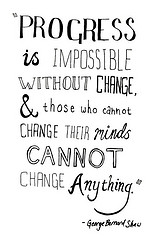
There was a time, and still is to millions, when “design” meant looking pretty—or not.
Design certainly didn’t refer to finding solutions to life’s real problems.
Of course, first you have to identify the problems, which isn’t done 140 characters at a time.
You won’t find them with Google and there’s no app for that.
Identifying real-world problems requires actually talking (gasp) to people—and real world experience doesn’t hurt.
This may be why senior entrepreneurs are on the rise, since it means communicating with empathy and putting yourself in someone else’s shoes.
Empathy seems to be in short supply the younger you go, but it can be taught and where else but at D.school—the top design school.
At the heart of the school’s courses is developing what David Kelley, one of the school’s founders, calls an empathy muscle. … the students are taught to forgo computer screens and spreadsheets and focus on people.
So far, that process has worked. In the eight years since the design school opened, students have churned out dozens of innovative products and start-ups. They have developed original ways to tackle infant mortality, unreliable electricity and malnutrition in the third world, as well as clubfoot, a common congenital deformity that twists a baby’s feet inward and down. (…)
Mr. Kothari also said his plans took a new path. Before he took his first D.school course in 2008, he said, he spent most of his spare time in front of a computer, brainstorming ideas for websites and mobile apps that never materialized. Design was always an afterthought. But he says that first ramen assignment became the prelude to a revolutionary new way of solving problems by spending time with people to understand how they live their lives.
Empathy muscle.
I like that.
Too bad the teaching is limited to design and only at one school.
It’s definitely a muscle that is lacking in many of the under-25 crowd and badly atrophied in much of the rest of the population.
Flickr image credit: Arya Ziai
Posted in Personal Growth | No Comments »
Wednesday, September 11th, 2013
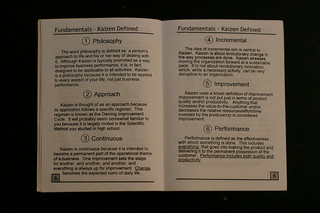 There will be numerous stories today about the events of 12 years ago; however, I already shared the only personal story I believed added a different component to the usual conversation. There will be numerous stories today about the events of 12 years ago; however, I already shared the only personal story I believed added a different component to the usual conversation.
Instead of looking backwards, I want to show you the present and what one company, Toyota, did to change the course of food philanthropy in New York City—a lesson that other areas would do well to consider.
Many businesses of all sizes write checks to charities and others offer time off for their people to actively pursue projects.
Toyota wrote check, too, but then had a better idea.
Instead of a check, it offered kaizen. … an effort to optimize flow and quality by constantly searching for ways to streamline and enhance performance.
Think small improvements that offer large results over time.
What could a bunch of engineers and a dose of kaizen really do for the country’s largest anti-hunger charity?
To get the full impact you need to read the story, but consider this,
At a soup kitchen in Harlem, Toyota’s engineers cut down the wait time for dinner to 18 minutes from as long as 90. At a food pantry on Staten Island, they reduced the time people spent filling their bags to 6 minutes from 11. And at a warehouse in Bushwick, Brooklyn, where volunteers were packing boxes of supplies for victims of Hurricane Sandy, a dose of kaizen cut the time it took to pack one box to 11 seconds from 3 minutes.
The biggest take-away of this story is the absolute proof that the only thing required to take an approach known to yield positive results and successfully apply it in circumstances with no relationship to the norm is not an open mind, but rather a willingness to be proven wrong.
“They make cars; I run a kitchen,” said Daryl Foriest, director of distribution at the Food Bank’s pantry and soup kitchen in Harlem. “This won’t work.”
Happily, Foriest was proven wrong.
Toyota has “revolutionized the way we serve our community,” said Margarette Purvis, the chief executive and president of the Food Bank. (…) “I never thought that what we needed were a bunch of engineers. In our world food is king, but we didn’t know that the queen would be kaizen.”
So the next time you are about to reject an outré solution, remember what kaizen did for the NY Food Bank and rethink your decision.
Flickr image credit: Inha Leex Hale
Posted in Culture, Innovation | No Comments »
Friday, March 22nd, 2013
A Friday series exploring Startups and the people who make them go. Read all If the Shoe Fits posts here
 You recognized a need or a problem and had an idea for a solution. You recognized a need or a problem and had an idea for a solution.
You started your company based on that idea.
You attracted a team and customers because your idea worked.
Now what?
Early success doesn’t always translate to long(er)-term success.
Why?
Because one-product companies don’t prosper long-term.
Extending and expanding product uses based on customer feedback will provide further growth, but for longer-term success you want additional products.
The best new products will address your current market place.
Why?
Because your current client base knows and trusts you, so they will be more willing to try a new product from you.
And this is where many founders go astray.
They assume new product ideas will come from them, another senior manager or a senior developer, instead of allowing ideas to bubble up from anybody on their staff.
Which is why they are so surprised when a lower ranking staffer resigns to do a startup that plays to their market.
Where is your next idea coming from?
Image credit: HikingArtist
Posted in Entrepreneurs, If the Shoe Fits, Innovation | No Comments »
|
 Subscribe to
Subscribe to
MAPping Company Success
About Miki 
Clarify your exec summary, website, etc.
Have a quick question or just want to chat? Feel free to write or call me at 360.335.8054
The 12 Ingredients of a Fillable Req
CheatSheet for InterviewERS
CheatSheet for InterviewEEs™
Give your mind a rest. Here are 4 quick ways to get rid of kinks, break a logjam or juice your creativity!
Creative mousing
Bubblewrap!
Animal innovation
Brain teaser
The latest disaster is here at home; donate to the East Coast recovery efforts now!
Text REDCROSS to 90999 to make a $10 donation or call 00.733.2767. $10 really really does make a difference and you'll never miss it.
And always donate what you can whenever you can
The following accept cash and in-kind donations: Doctors Without Borders, UNICEF, Red Cross, World Food Program, Save the Children
*/
?>About Miki
About KG
Clarify your exec summary, website, marketing collateral, etc.
Have a question or just want to chat @ no cost? Feel free to write
Download useful assistance now.
Entrepreneurs face difficulties that are hard for most people to imagine, let alone understand. You can find anonymous help and connections that do understand at 7 cups of tea.
Crises never end.
$10 really does make a difference and you’ll never miss it,
while $10 a month has exponential power.
Always donate what you can whenever you can.
The following accept cash and in-kind donations:
|






 Two stories today made me really happy.
Two stories today made me really happy.



 There will be numerous stories today about the events of 12 years ago; however, I already shared the
There will be numerous stories today about the events of 12 years ago; however, I already shared the 
